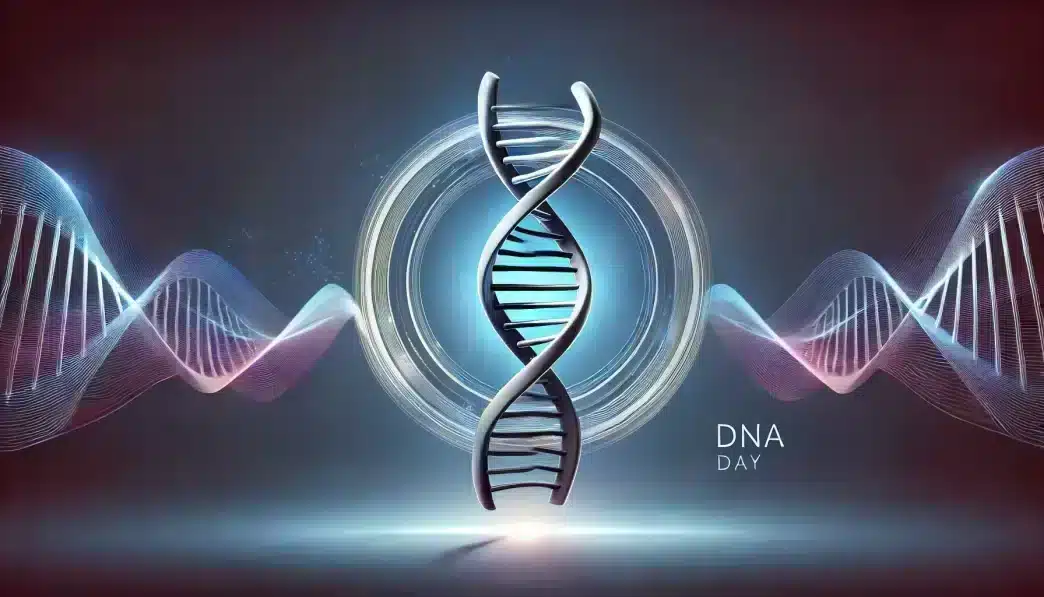What is National DNA Day?
National DNA Day is celebrated annually in the United States on April 25 to honor two significant milestones in the field of genetics: the discovery of DNA’s double helix structure in 1953 and the completion of the Human Genome Project in 2003. This day serves as an opportunity for students, educators, and the public to learn about genetics and genomics, and to reflect on how these scientific advancements impact our understanding of life and health.
The discovery of the double helix by James Watson, Francis Crick, Maurice Wilkins, and Rosalind Franklin revolutionized biology by revealing the molecular structure of DNA, the molecule that carries genetic information in living organisms. Fifty years later, the Human Genome Project successfully mapped the entire human genome, providing an extensive reference for researchers and paving the way for personalized medicine and advanced genetic research.
History and Origin
In 2003, to commemorate the 50th anniversary of the discovery of the DNA double helix and the near completion of the Human Genome Project, the U.S. Congress passed concurrent resolutions designating April 25 as National DNA Day. The National Human Genome Research Institute (NHGRI) has since led the annual celebration, organizing events and educational programs to promote genetics literacy and awareness.
Over the years, National DNA Day has expanded beyond the United States, with various countries and organizations worldwide participating in activities that highlight the importance of genetics and genomics. These events aim to inspire the next generation of scientists and to engage the public in discussions about the ethical, legal, and social implications of genomic research. Schools, universities, and research institutions use this day to encourage curiosity and understanding about the role of DNA in health, ancestry, and evolution.
Who Celebrates National DNA Day?
- Students and Educators: Schools and universities incorporate genetics-themed lessons and activities into their curricula to engage students in the wonders of DNA science.
- Researchers and Scientists: Professionals in genetics and genomics share their latest findings and advancements with the public through lectures, workshops, and open labs.
- Healthcare Professionals: Medical practitioners emphasize the role of genetics in health and disease, educating patients about genetic testing and personalized medicine.
- Community Organizations: Groups dedicated to science outreach host events, such as DNA extraction demonstrations and public seminars, to make genetics accessible to all.
- General Public: Individuals with an interest in science and genetics participate in various events to broaden their understanding of how DNA influences life.
Slogans and Themes
National DNA Day embraces themes of discovery, education, and innovation. The day emphasizes the profound impact of genetic research on medicine, agriculture, and evolutionary biology. Slogans such as “Unraveling the Mysteries of Life,” “The Blueprint of Life,” and “Genomics: The Future is Now” encapsulate the objectives of the celebration. Each year, specific themes highlight topics such as genetic diversity, ethical considerations in genomics, or the role of genetics in healthcare, encouraging discussions and learning opportunities.
Colors, Symbols, and Patterns
Colors
- Blue: Represents the scientific and medical aspects of genetics.
- Green: Symbolizes growth, life, and the natural world, reflecting DNA’s fundamental role in biology.
- White: Denotes clarity and the quest for knowledge, aligning with the pursuit of scientific understanding.
Symbols
- Double Helix: The iconic representation of DNA’s structure, symbolizing the essence of genetic information.
- Microscope: Represents scientific research and discovery in the field of genetics.
- Chromosome: Highlights the organization of DNA within cells and its role in heredity.
Patterns
- Intertwined Strands: Reflect the helical structure of DNA and the interconnectedness of all living things.
- Sequencing Lines: Symbolize the process of decoding genetic information, essential to genomics research.
- Molecular Models: Depict the chemical composition of DNA, emphasizing its molecular complexity.
How to Celebrate National DNA Day
- Participate in Educational Events: Attend lectures, webinars, or workshops hosted by educational institutions or scientific organizations to learn about the latest developments in genetics.
- Conduct DNA Experiments: Engage in hands-on activities, such as DNA extraction experiments, to visualize and understand the physical properties of DNA.
- Explore Genetic Ancestry: Utilize direct-to-consumer genetic testing services to discover more about your heritage and genetic background.
- Discuss Ethical Implications: Join conversations or debates about the ethical, legal, and social issues surrounding genetic research and its applications.
- Share Knowledge: Use social media platforms to spread awareness about National DNA Day, sharing interesting facts, resources, or personal stories related to genetics.
Most Used Hashtags
- #NationalDNADay
- #DNADay2025
- #Genomics
- #HumanGenome
- #DoubleHelix
Why is National DNA Day Important?
National DNA Day serves as a reminder of the monumental achievements in genetics that have profoundly influenced science and medicine. By commemorating the discovery of the DNA double helix and the completion of the Human Genome Project, this day highlights the continuous journey of exploration into the genetic underpinnings of life. It fosters public engagement, encourages education in the sciences, and inspires future generations to contribute to the ever-evolving field of genomics.
Understanding DNA and its functions has led to significant advancements in diagnosing and treating diseases, developing personalized medical approaches, and appreciating the genetic diversity that shapes all living organisms. Genetics is now at the forefront of medicine, influencing everything from cancer treatments to ancestry research. The ethical considerations of DNA-related technology, such as gene editing and privacy concerns, make National DNA Day an essential opportunity for informed discussion about the future of genetics.
National DNA Day is not just about celebrating past discoveries; it is about looking forward to the potential that genetic research holds for the future. Scientists continue to explore how genetics can solve medical mysteries, enhance agricultural practices, and improve quality of life worldwide. As technology advances, this day encourages society to remain engaged, informed, and ethically responsible in the application of genetic science.
Features
April 25: DNA Day (United States)
Why do you keep falling for the same type?
Read the article Lovemaps: the hidden blueprint of our love.

